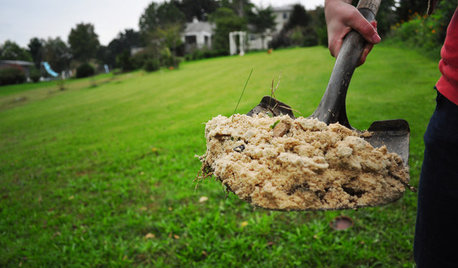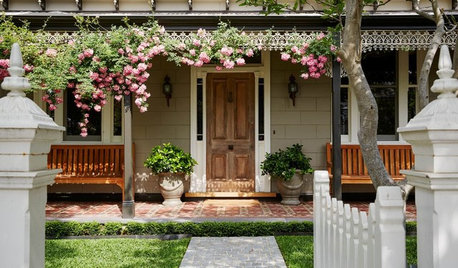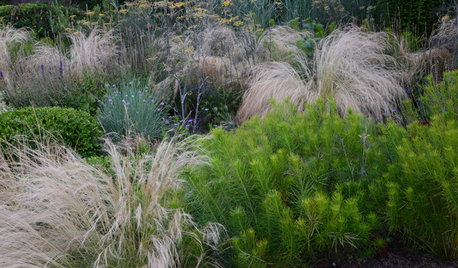sheet mulching
dhos
15 years ago
Related Stories

GARDENING GUIDESGarden Myths to Debunk as You Dig This Fall and Rest Over Winter
Termites hate wood mulch, don’t amend soil for trees, avoid gravel in planters — and more nuggets of garden wisdom
Full Story
GARDENING AND LANDSCAPINGGarden Musts for March
Some toil in the soil this month will help ensure a blooming garden come summer, so dig out your shovel and bring on the mulch
Full Story
EARTH DAYThe Case for Losing the Traditional Lawn
Work less, help the environment and foster connections by just saying no to typical turf
Full Story
GARDENING GUIDESSolve 3 Common Landscape Problems — With More Plants
Sometimes the best defense is a good offense
Full Story
LANDSCAPE DESIGNGet Along With Less Lawn — Ideas to Save Water and Effort
Ditch the mower and lower your water bill while creating a feast for the eyes with diverse plantings and gathering places
Full Story
EARTH DAY5 Ideas for a More Earth-Friendly Garden
Consider increasing the size of garden beds, filtering rainwater and using plants to reduce energy use
Full Story
LANDSCAPE DESIGNFront-Yard Makeover Ideas With Mojo
Make a statement in your front landscape with one of these standout styles
Full Story
GARDENING GUIDES5 Ways to Naturally Win the Weed War
Show irksome weeds no mercy with these tricks for combating them sans chemicals
Full Story
GARDENING GUIDESLush, Foodie Abundance in a Small Urban Garden
This modest backyard garden provides its owner with fruit and vegetables all year round, thanks to an innovative low-maintenance approach
Full Story
GARDENING GUIDES4 Ways to Break the Rules in Your Garden
For a more creative landscape design, take a different approach to planting
Full Story





kqcrna
adirondackgardener
Related Professionals
New Bedford Landscape Architects & Landscape Designers · Ballwin Landscape Architects & Landscape Designers · Lakeland Landscape Contractors · Burien Landscape Contractors · Canyon Lake Landscape Contractors · Coram Landscape Contractors · Fort Atkinson Landscape Contractors · Huntington Landscape Contractors · Wanaque Landscape Contractors · Bainbridge Island Decks, Patios & Outdoor Enclosures · Des Moines Decks, Patios & Outdoor Enclosures · Lockport Decks, Patios & Outdoor Enclosures · Midlothian Decks, Patios & Outdoor Enclosures · Universal City Decks, Patios & Outdoor Enclosures · West Chicago Decks, Patios & Outdoor EnclosuresdhosOriginal Author
rj_hythloday
jennypat Zone 3b NW MN
Kimmsr
annpat
led_zep_rules
napapen
terrene
annpat
greenm_sia
annpat
adirondackgardener
gnomey
annpat
gnomey
annpat
esther_opal
gnomey
Kimmsr